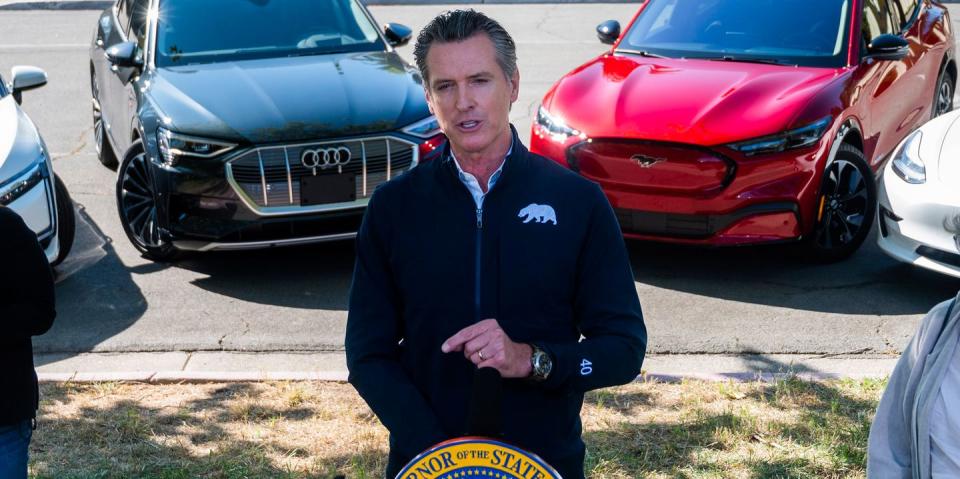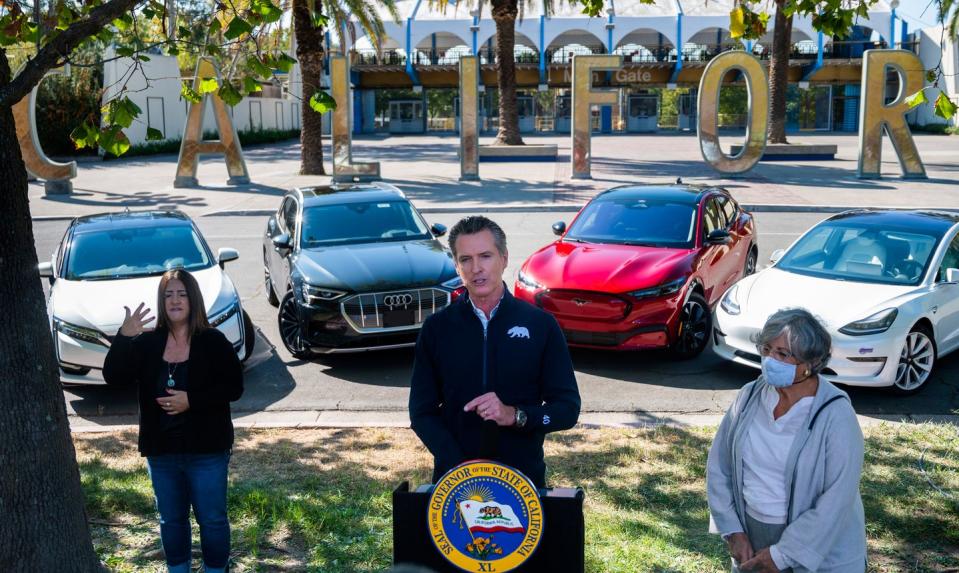California Dreams of an EV-Only Future


From the January 2021 issue of Car and Driver.
On September 23, with a devastating wildfire season as the backdrop, California Governor Gavin Newsom signed an executive order banning the sale of new combustion-powered passenger vehicles in the state by 2035. That means no new gas engines and no new diesels.
Newsom's order now goes to the powerful California Air Resources Board (CARB), which will hold hearings before writing the regulations. For those of us with gasoline running through our veins, the order might look like sugar poured in the engine's fuel tank. But this isn't the finger that knocks over the first domino. It is a single domino in the middle of a chain that's already toppling. Falling battery prices, growing concern over the effects of climate change, and surging demand for EVs in Europe and Asia are fueling the internal-combustion engine's decline.
The major players in the global auto industry readily acknowledge that millions of vehicles will shift from having combustion engines to battery power during the 2020s. It's the only viable, scalable way to slash the well-to-wheel carbon emissions from on-road vehicles. Before Newsom signed his order, 16 of 26 major auto-parts suppliers surveyed by engineering consultancy Ricardo said meeting mandates for 100 percent zero-emission vehicles (ZEVs) by 2035 or 2040 was achievable with existing technology. And some want to go even bigger. Fourteen said they would back such a target nationwide. In October, Oregon Senator Jeff Merkley and California Representative Mike Levin introduced a federal bill to do just that, though it is not likely to reach a vote anytime soon.
The auto industry is in near universal agreement that the future is electric. The disagreements largely focus on timing: Will people start to adopt ZEVs en masse within a couple of years or not until 2040? California is betting that technological advances, automaker investments, and consumer acceptance will propel EVs toward the tipping point sooner than later. The pool of potential EV buyers is set to grow as new models arrive in the mid-size-crossover and full-size-pickup segments in the next three years. And with battery costs falling faster than anyone predicted in 2010, carmakers say they see a path to selling electric vehicles with ranges of more than 200 miles that, crucially, make money. The Volkswagen Group claims the batteries in its newest EVs cost less than $100 per kilowatt-hour of capacity, an oft-cited target for profitability. And GM president Mark Reuss says every model built on the company's new Ultium electric-vehicle architecture will make money, starting with the GMC Hummer EV in late 2021. (Some analysts remain skeptical.)
Once the EV world becomes profitable to more than just Tesla (which currently relies on the sale of regulatory credits to other manufacturers to be in the black), carmakers will start to market these vehicles pervasively and competently—something they've utterly failed to do to date. That means touting EVs' inherent benefits, including strong acceleration, calm and quiet powertrains, and a "full tank" every morning. Ken Morris, GM's vice president of electric and autonomous programs, said in November that the company sees "an inflection point" in the mid-2020s when "customer adoption will increase rapidly."

 Yahoo Autos
Yahoo Autos 